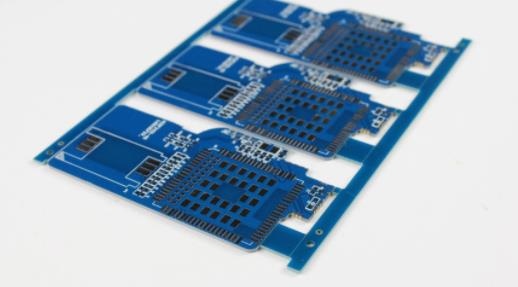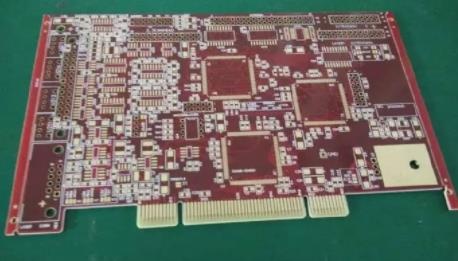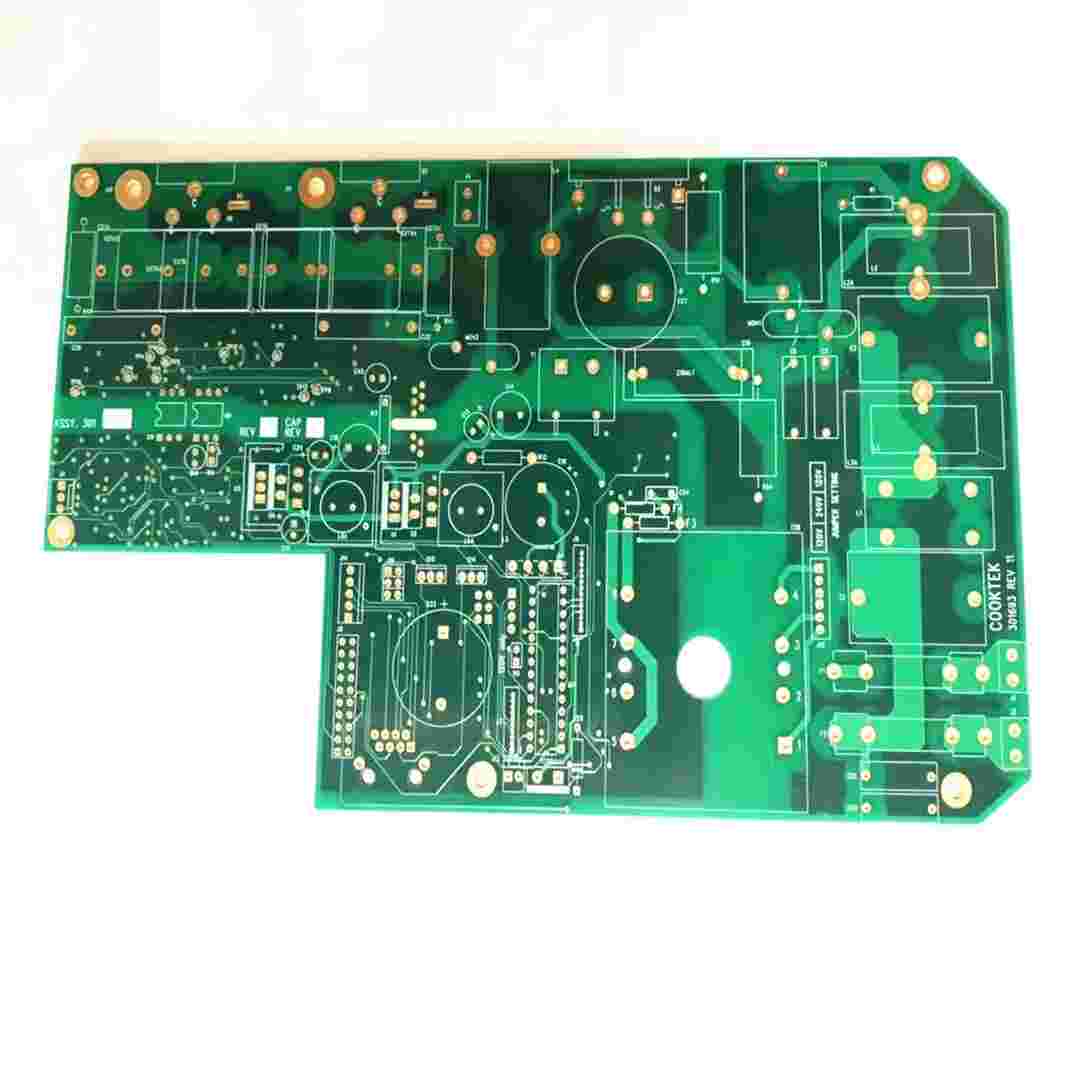
PCB manufacturers explain the production technology of high-density PCB
High precision of printed circuit board refers to the adoption of technologies such as fine line width/spacing, micro holes, narrow ring width (or no ring width), buried and blind holes to achieve high density. High precision means that the result of "thin, small, narrow and thin" will inevitably lead to high precision requirements. Take the line width as an example: O 20mm line width, 0.16~0.24mm produced as required is qualified, and the error is (O.20 ± 0.04) mm; Similarly, the error of O.10mm linewidth is (0.10 ± O.02) mm. Obviously, the accuracy of the latter is doubled. It is easy to understand the analogy. Therefore, the requirements for high accuracy will not be discussed separately. But it is a prominent problem in production technology.
(1) The high fine wire width/spacing of fine wire technology in the future will be 0.20mm-O.13mm-0.08mm-0.005mm, which can meet the requirements of SMT and Multichip Package (MCP). Therefore, the following technologies are required.
① Thin or ultra-thin copper foil (<18um) substrate and fine surface treatment technology are adopted.
② The thin dry film and wet film pasting process are adopted. The thin and high-quality dry film can reduce line width distortion and defects. Wet pasting can fill small air gap, increase interface adhesion, and improve wire integrity and accuracy.
③ The parallel light exposure technology is adopted. Because the parallel light exposure can overcome the influence of the line width variation caused by the oblique rays of the "point" light source, fine wires with accurate line width size and smooth edges can be obtained. However, parallel exposure equipment is expensive, high investment, and requires working in a high cleanliness environment.

④ Electrodeposited photoresist (ED) was used. Its thickness can be controlled within the range of 5~30/um, which can produce more perfect fine wires. It is especially suitable for narrow ring width, no ring width and full plate electroplating. At present, there are more than ten ED production lines worldwide.
⑤ Automatic Optical Inspection (AOI) is adopted. This technology has become an essential means of detection in the production of fine wires, and is being rapidly promoted, applied and developed.
(2) The function hole of printed circuit board used for surface mounting of microporous technology mainly plays the role of electrical interconnection, which makes the application of microporous technology more important. Using conventional drill materials and CNC drilling machines to produce micro holes has many faults and high costs. Therefore, the high-density PCB mainly focuses on the fine densification of wires and bonding pads. Although great achievements have been made, its potential is limited. To further improve the fine densification (such as wires smaller than 0.8mm), the cost will rise sharply, so micro holes will be used to improve the fine densification.
In recent years, CNC drilling machine and micro drill technology have made breakthrough progress, so micro hole technology has developed rapidly. This is the main outstanding feature in current PCB production. In the future, the micro hole forming technology will mainly rely on advanced CNC drilling machines and fine micro heads, while the micro holes formed by laser technology are still inferior to those formed by CNC drilling machines in terms of cost and hole quality.
① Buried, blind and through hole technology Buried, blind and through hole combination technology is also an important way to improve the high-density of printed circuit. Generally, the buried and blind holes are micro holes. In addition to increasing the number of wiring on the board, the buried and blind holes use the "nearest" inter layer interconnection, which greatly reduces the number of vias formed and the setting of isolation panels, thus increasing the number of effective wiring and inter layer interconnection in the board and improving the high-density interconnection. Therefore, the interconnection density of the multilayer board with buried, blind and through holes is at least three times higher than that of the conventional full through hole board structure under the same size and number of layers. If the printed board with buried, blind and through holes is under the same technical indicators, its size will be greatly reduced or the number of layers will be significantly reduced. Therefore, in the high-density surface mounted printed boards, the buried and blind hole technology has been increasingly applied, not only in the surface mounted printed boards of large computers and communication equipment, but also in the fields of civil and industrial use, and even in some thin boards, such as PCMCIA, Smard, IC card and other thin boards with more than six layers.
The printed circuit board with buried and blind hole structure is generally completed by "separate board" production, which means that it can only be completed after multiple pressing plates, drilling, hole electroplating, etc., so precise positioning is very important.
② CNC drilling machine At present, the technology of CNC drilling machine has made new breakthrough and progress. A new generation of CNC drilling machine characterized by drilling micro holes has been formed. The efficiency of drilling small holes (less than 0.50 mm) by microporous drilling machine is one time higher than that of conventional CNC drilling machine, with fewer failures and rotating speed of 11~15r/min; It can drill 0.1-0.2mm micropores. It uses a high-quality small drill bit with high cobalt content and can stack three plates (1.6mm/piece) for drilling. When the drill bit breaks, it can automatically stop and report the position, automatically change the drill bit and check the diameter (the tool magazine can accommodate hundreds of pieces), automatically control the constant distance between the drill tip and the cover plate and the drilling depth, so that blind holes can be drilled without damaging the table. CNC drilling machine table adopts air cushion and magnetic levitation, which can move faster, lighter and more accurately without scratching the table. Such drilling machines are very popular at present, such as the Mega 4600 of Prurite in Italy, the ExcelIon 2000 series in the United States, and new generation products from Switzerland and Germany.
③ Laser drilling conventional CNC drilling machine and drill to drill small holes do have many problems. Laser etching has been paid attention to, studied and applied because it has hindered the development of micro hole technology. However, there is a fatal disadvantage, that is, the horn hole is formed and becomes serious with the increase of plate thickness. In addition, the pollution caused by high-temperature ablation (especially multilayer boards), the life and maintenance of light sources, the repeated accuracy of etch holes, and the cost are also problems, so the promotion and application of micro holes in PCB production are limited. However, laser etching is still applied to thin high-density microporous plates, especially in the high-density interconnection (HDI) technology of MCM-L, such as the combination of polyester film etching and metal deposition (sputtering technology) in M.C.Ms. Buried hole formation in high-density interconnection multilayer boards with buried and blind hole structures can also be applied. However, due to the development and technical breakthrough of CNC drilling machine and micro drill, it has been rapidly promoted and applied. Therefore, the application of laser drilling in surface mounted PCB can not form a dominant position. But it still has a place in a certain field. Circuit board assembly and circuit board processing manufacturers explained that the high-precision of printed circuit board adopts buried, blind hole and other technologies to achieve high-density.






